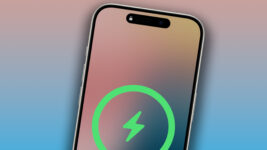
Exact two temperatures you must keep your iPhone between or risk a big bill and ‘permanently’ killing its battery life
EXPOSING your iPhone to certain temperatures can “permanently” shorten its battery life – and cost you a chunk of change too.
In fact, you may have already let your iPhone get too hot or cold without realising.
Like most smartphones, your iPhone is powered by a lithium-ion battery.
They’re cheap to make, hold plenty of juice, and can be recharged over and over for years before they degrade too significantly.
But you need to take good care of the battery or its performance can suffer.
Apple reveals that you should try to only use your iPhone when the “ambient temperature” between 0C and 35C (32F and 95F).
So if it’s a scorching hot day or well below zero, you should avoid using the iPhone.
Cold can be bad because it can prevent your iPhone from working, slash battery life, and even cause it to shut down entirely.
But heat is the real killer for batteries, causing long-term damage.
“Low- or high-temperature conditions might cause your device to change its behavior to regulate its temperature,” Apple explained.
“Using an iOS or iPadOS device in very hot conditions can permanently shorten battery life.”
If you’re storing your device, you can be a little more flexible.
Apple says that it’s fine to store an iPhone between -20C and 45C (-4F and 113F).
But the iPhone maker warned: “Don’t leave your device in your car, because temperatures in parked cars can exceed this range.”
If your iPhone is getting too hot, it might try to regulate its temperature.
You might notice some changes, including:
- Charging slowing down or stopping entirely
- Display dimming or going completely black
- Weaker signal as the built-in cellular radio enters a low-power state
- Camera flash being disabled
- Performance for apps reduced (you may spot lower frame rates or longer waits for features to work)
Taking simple precautions can help you avoid letting your iPhone get too hot.
Don’t leave it in a car on a hot day, and never let it sit in direct sunlight for an extended period of time.
If you break either of those rules, try to avoid doing any intensive activities on your iPhone.
For instance, Apple recommends not using GPS tracking or playing graphically intensive games in hot environments for extended periods of time.
If your iPhone gets too hot, you might even see a warning screen.
This will probably say something like: “Temperature: iPhone needs to cool down before you can use it.”
The best course of action in that case is to turn your iPhone off and move it somewhere much cooler.
Why does heat damage batteries?
Here’s what you need to know…
- Hot temperatures can cause permanent damage to batteries
- That’s because batteries contain fluids, and work through chemical reactions
- When heat is applied to a battery, the fluid inside starts to evaporate
- This damages the internal structure of the battery
- Components like the voltage indicator can be affected by heat
- This can allow batteries to charge at too high a rate, which can lead to a loss of electrolytes
- This can reduce battery life over time
- As batteries heat up, chemical reactions inside will also occur faster
- Excessive chemical reactions can reduce long-term battery life
Avoid using it until it returns to a more normal temperature.
It’s worth noting that your iPhone won’t be usable for anything other than emergency calls while that warning screen is active.
The problem with letting your iPhone get too hot is that your battery can severely degrade permanently.
That’s in addition to the regular chemical ageing that a battery goes through as use charge and discharge it over the years.
Normally you’d expect an iPhone battery to hold about 80% of its original maximum charge after 500 charge cycles – or around two years.
But an iPhone that gets too hot very often could hold even less.
It might mean that you feel the need to upgrade even sooner as your battery life plummets.
Alternatively, you can pay for an iPhone battery swap at the Apple Store, but that’s going to cost you too.
So the best tactic is to simply take better care of your iPhone and avoid letting it get too hot.






